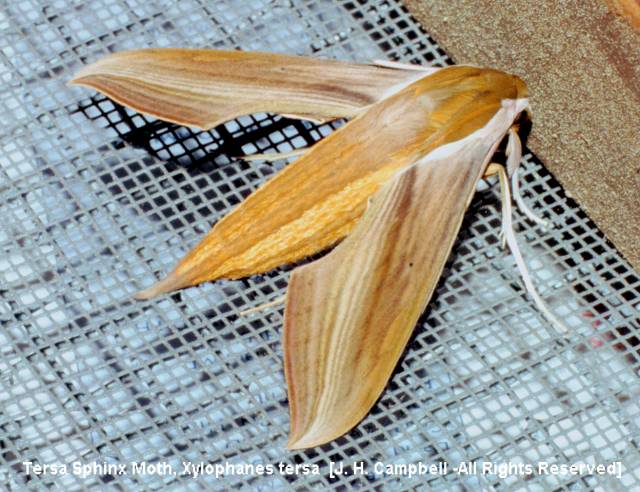
Xylophanes tersa tersa courtesy of John H. Campbell

This site has been created by Bill Oehlke
Comments, suggestions and/or additional information are welcomed by Bill.
TAXONOMY:
Family: Sphingidae, Latreille, 1802 |
|
|
Updated as per
AN ANNOTATED CHECKLIST OF THE SPHINGIDAE OF BOLIVIA, October 2007 Updated as per http://www.pybio.org/SPHINGINAE.htm (Paraguay), October 2007 Updated as per More, Kitching and Cocucci's Hawkmoths of Argentina 2005, October, 2007 Updated as per personal communication with Tony James (St. Lucia, October 8, 2015); November 16, 2015 Updated as per personal communication with Ezequiel Bustos (Shilap revta. lepid. 43 (172) diciembre, 2015, 615-631 eISSN 2340-4078 ISSN 0300-5267), January 4, 2016 Updated as per personal communication with Marco Antonio (Santa Isabel, Sao Paulo, Brazil, April 12, 2019); April 13, 2019 |


This site has been created by Bill Oehlke
Comments, suggestions and/or additional information are welcomed by Bill.
TAXONOMY:
Family: Sphingidae, Latreille, 1802 |
Visit Xylophanes tersa adult and larva, Extremoz, Rio Grande do Norte, Brazil, March 27, 2016, courtesy of Francierlem Oliveira.
Visit Xylophanes tersa, Collier-Seminole State Park, Collier County, Florida, March 8, 2017, courtesy of David Wright.
An occasional stray makes its way into Canada.
They are common in Guadeloupe, Martinique, Marie-Galante, St-Martin, St- Bartholomew and throughout the Antilles.
Tony James reports them in St. Lucia.
Maryland is the specimen type locality.
I still have a good specimen in my boyhood collection from New Jersey from over 35 years ago.
The upperside of the forewing is pale brown with lavender-gray at the base and has dark brown lengthwise lines throughout. The upperside of the hindwing is dark brown with a band of whitish, wedge-shaped marks.
The f. tristis Closs, 1911, Bahamas, is same as Xylophanes tersa tersa.
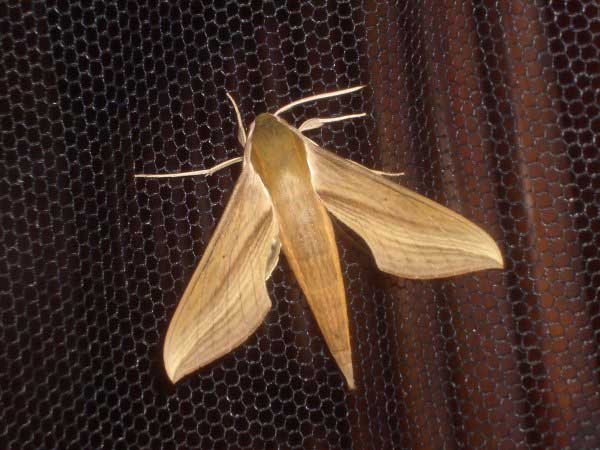
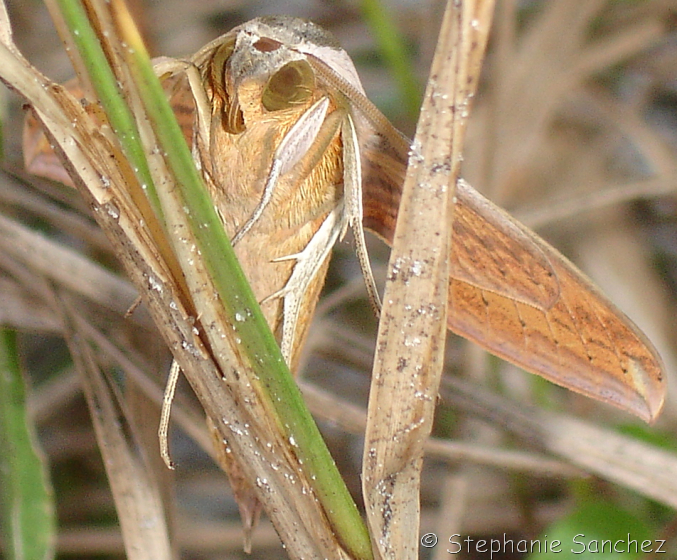
Xylophanes tersa head showing coiled proboscis, leg spines, etc.,
courtesy/copyright Stephanie Sanchez, Florida.
The pronunciation of scientific names is troublesome for many. The "suggestion" at the top of the page is
merely a suggestion. It is based on commonly accepted English pronunciation of Greek names and/or some
fairly well accepted "rules" for latinized scientific names.
The suggested pronunciations, on this page and on other pages, are primarily put forward to assist those who hear with internal ears as they read.
There are many collectors from different countries whose intonations and accents would be different.
"Xylo" is the Greek word for wood. The specimen type for the genus Xylophanes is Xylophanes anubus. Perhaps ? when Hubner
examined that species, the yellow-orange and brown tones of the forewings suggested wings of wood. The species name "tersa" is possibly from the Latin, meaning dry or parched land, and may refer to the dry-brown
colouration of the forewings.
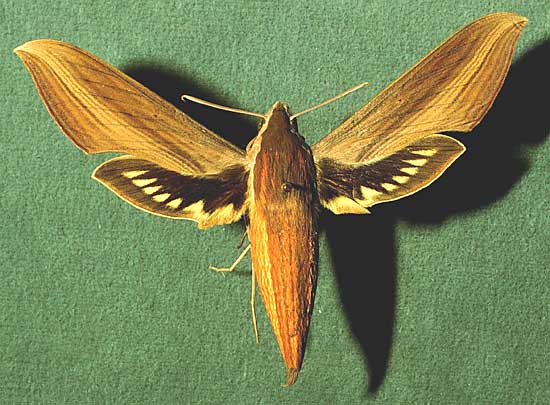
Female courtesy of Dan Janzen.
The snake-like larva has a head and the three thoracic segments which may be retracted into abdominal segment 1, which is swollen and adorned with a pair of light-ringed eye-spots. I often get questions about these larvae due to their voracious appetites for garden penta species.
| 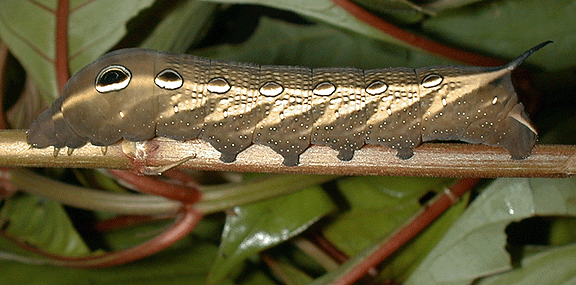 |
Larvae also feed on Borreria, Catalpa and Manettia spp. and Smooth buttonplant (Spermacoce glabra) and starclusters (Pentas species). They are also recorded on joe-pie weed and Hamelia patens.
Lawrence. E. Gilbert reports larvae on Hedoydis nigricans (Rubiaceae) at the field station in Austin (Brackenridge Field Laboratory), Texas. Frank Wiseman reports them on Heimia salicifolia (Hachinal).The pupa is tan with dark markings and is formed amongst surface debris. |
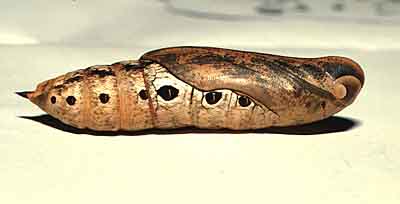 |
There is also a green colour morph.In Costa Rica larvae feed on Psychotria microdon and Psychotria nervosa of the Rubiaceae family and on Inga vera of the Fabaceae family. |
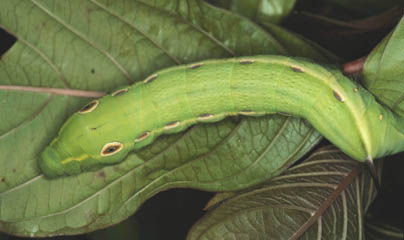 |
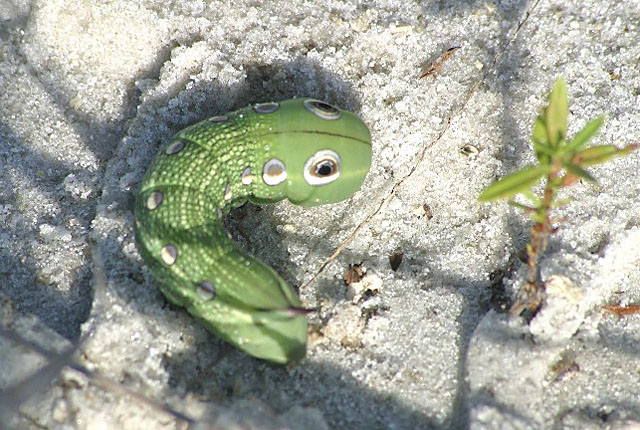
In the early instars, the string of lateral "eyespots" is often quite faint.
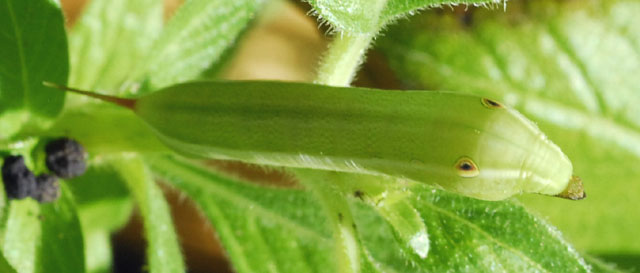
Xylophanes tersa, fourth instar, March 10, 2007,
Lee County, Florida, courtesy of Bill Rose.
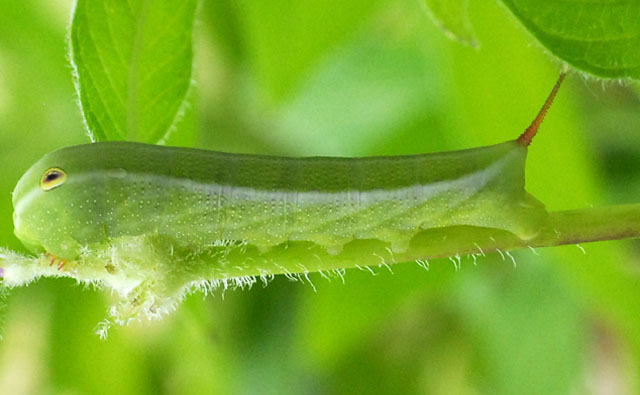
Xylophanes tersa, fourth instar, March 10, 2007,
Lee County, Florida, courtesy of Bill Rose.
Larvae are subject to parasitization by Microplitis marini of the Braconidae family.
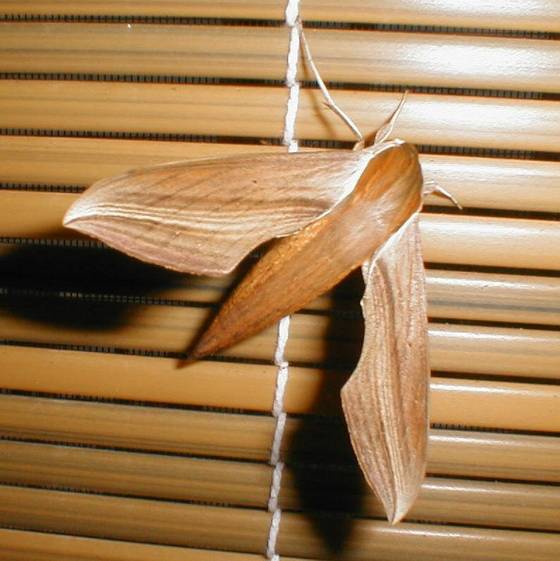
Use your browser "Back" button to return to the previous page.
Goto Main Sphingidae Index
Goto Macroglossini Tribe
Goto Central American Indices
Goto Carribean Islands
Goto South American Indices
Goto U.S.A. tables
Visit Xylophannes tersa additional images.